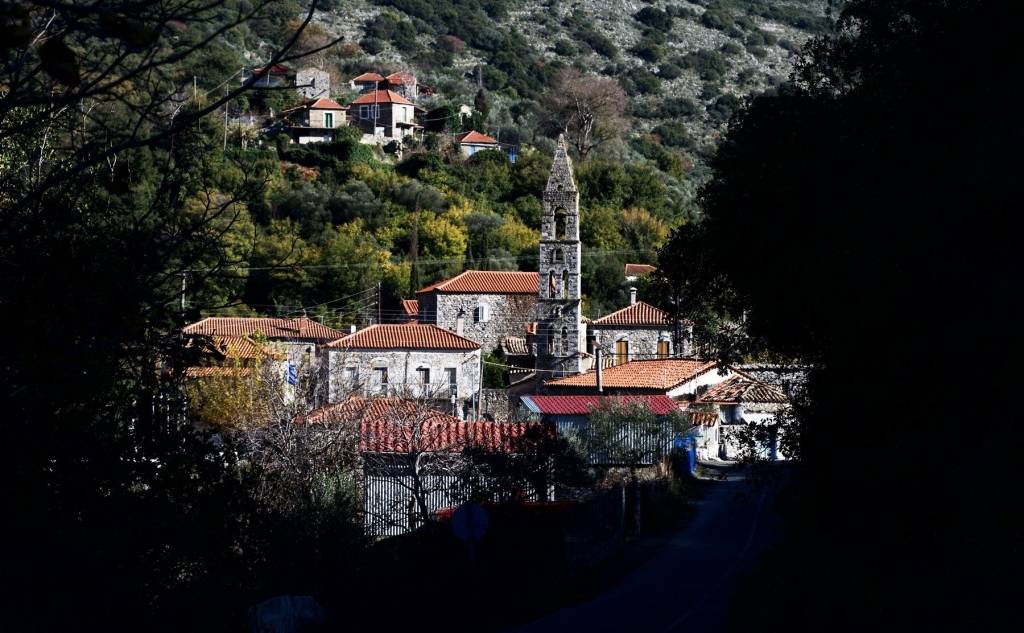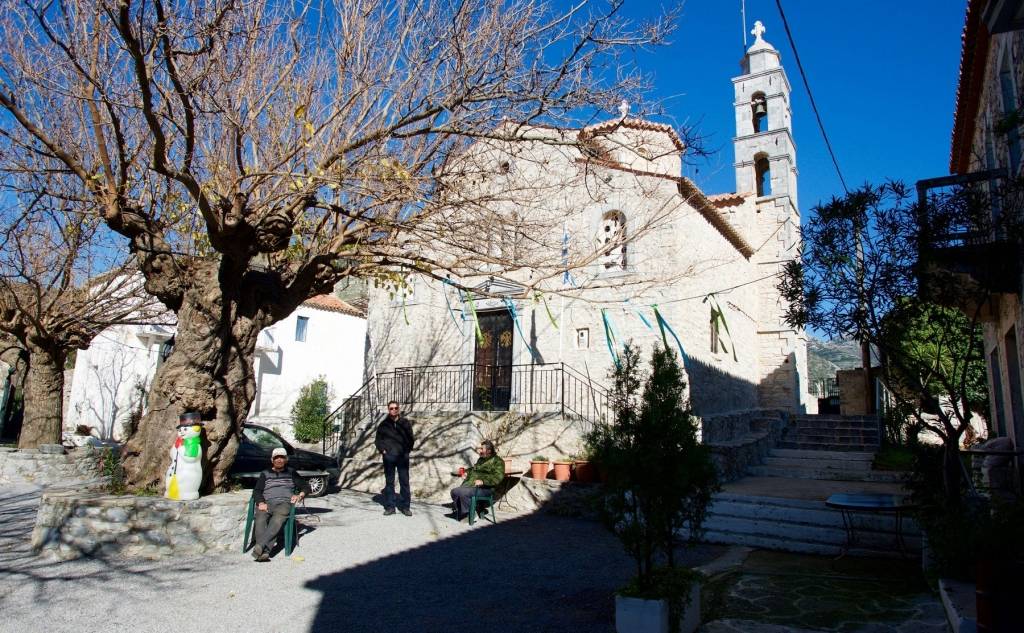







The traditional, mountainous village of Milia (Milea) is located on the western side of Mount Taygetos at an altitude of 550-600 metres. It is 15 kilometres from Stoupa and 60 kilometres from Kalamata and has approximately 300 permanent residents. Milia consists of the settlements of Fagrianika, Xanthianika, Sekourianika (euphemistically called "Citadel of Milia"), Kato Chora and Kyvelia (Garbelia). According to the prevailing opinion, the name of the village is due to the flourishing of the apple tree in the area, as the poet, Nikitas Nifakos, suggests in his verse:
"Ah, the apples of Milia, the musky ones".
According to another version, the name comes from the Homeric word "apples" (Mila), which means "goats and sheep", while there are many who argue that the name of the village comes from the bushy plant "sfakomilia" that abounds in the area.
The first evidence of Milea's name is found in 1465 in a Venetian document (together with the name of Androuvista - today's Exochori). We do not know exactly when the village was built. However, it is said that during ancient times, there was a temple of the goddess Athena in the area, served by many priests. In more recent years, Milia was the seat of one of the seven Captaincies of Exo Mani, captained by Giorgakis Kyvelos, who had his tower in Garbelia. Also, in 1730, the village was the seat of one of the five Dioceses of Exo Mani. At this point, we should mention that Konstantis Kolokotronis fled to Milia after being chased due to the Orlov Revolt (1770). Together, his family and his son Theodoros Kolokotronis (at a young age) were hosted for three years in the tower of the Kriparakos family. Konstantis Kolokotronis was betrayed and killed in the battle of Mikri Kastania, and his headless body was buried in Milia (in the Kyvelia settlement), where his tomb is preserved.
The village is surrounded by dense vegetation, firs, oaks and pines, while in the traditional square, visitors can enjoy a cup of coffee under the shade of mulberry trees. In the village, you can admire the restored tiled roofs, and traditional houses with unique decorations, while in the Xanthianika settlement, the stone-built fountain, "Pera Pigadi", stands out. In total, there are more than seventy churches and chapels in the area, while the following churches are of particular interest: The Church of the Transfiguration of the Savior (13th-14th century) dominates the central square of Fagrianika with an impressive bell tower, 22 metres high. The bell tower is made of local marble in the Gothic style. In Xanthianika, the Church of the Dormition (12th century) stands out with its excellent wall painting, while the church of Agios Ioannis was painted in 1706 by Kallergis. The Agios Nikolaos church, built with 11th-century marble, is also worth visiting.
At a higher altitude than Milia, at a distance of 5 kilometres from the village, the Monastery of Panagia Yatrissa (healer) is built. Specifically, the monastery is located on a small plateau at an altitude of 1000 metres, close to the forest of Vasiliki of Taygetos. Finally, just before reaching Milia from Karyovouni, at the "Kosmenika" location, the remarkable cave of Milia is worth visiting. The cave was explored by speleologist Giannis Kofinas and consists of rich decoration with stalactite and stalagmite formations. The walkable part of the cave is 14x15 metres, with a maximum height of 5 metres, and on the ceiling are living stalactites with strong dripping, where the water forms micro dams of calcium carbonate.
The village of Milia is the birthplace of poet and teacher Nikitas Nifakos (1748-1818), who enlightened many points of Mani's history, geography, and folklore tradition with his poetic work and teaching. Commander of 1821, Ilias Bisbinis (1790), who fought alongside General Panagiotis Giatrakos in Mistras, Valtetsi, Dervenakia and elsewhere, also came from Milia. In fact, Bisbinis had its own flag, with the image of Saint George. Finally, Ioannis Nifos (1793-1879), who took part in the siege of the fortress of Koroni and the battles in Valtetsi, Tripolis, Verga Almyros and elsewhere, was born in Milia. For his services to his homeland, he was awarded the Silver Medal of Excellence, while after the end of the fight, he was ordained a priest.